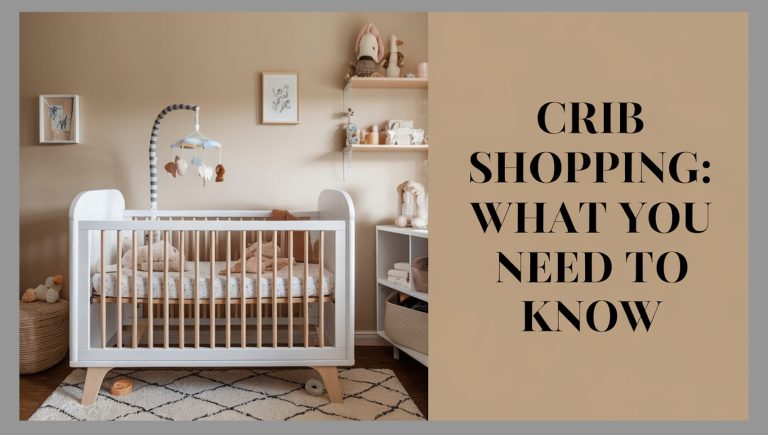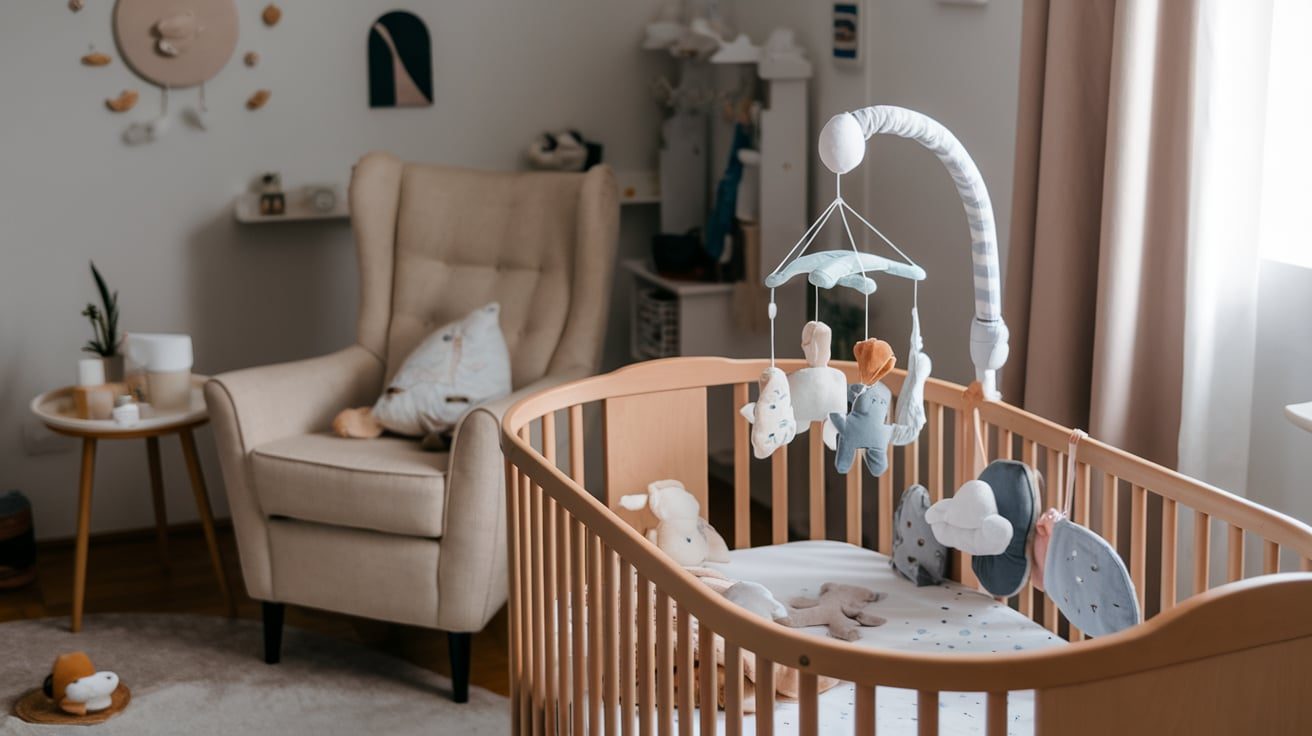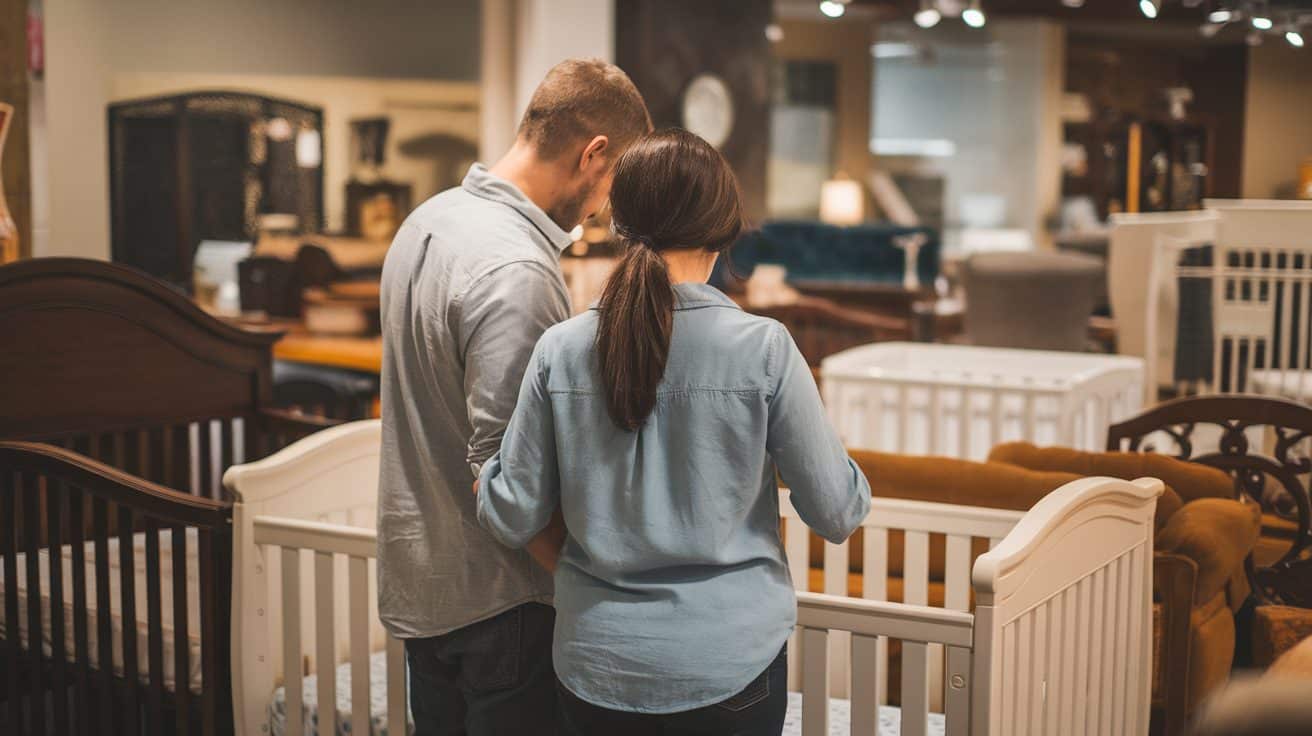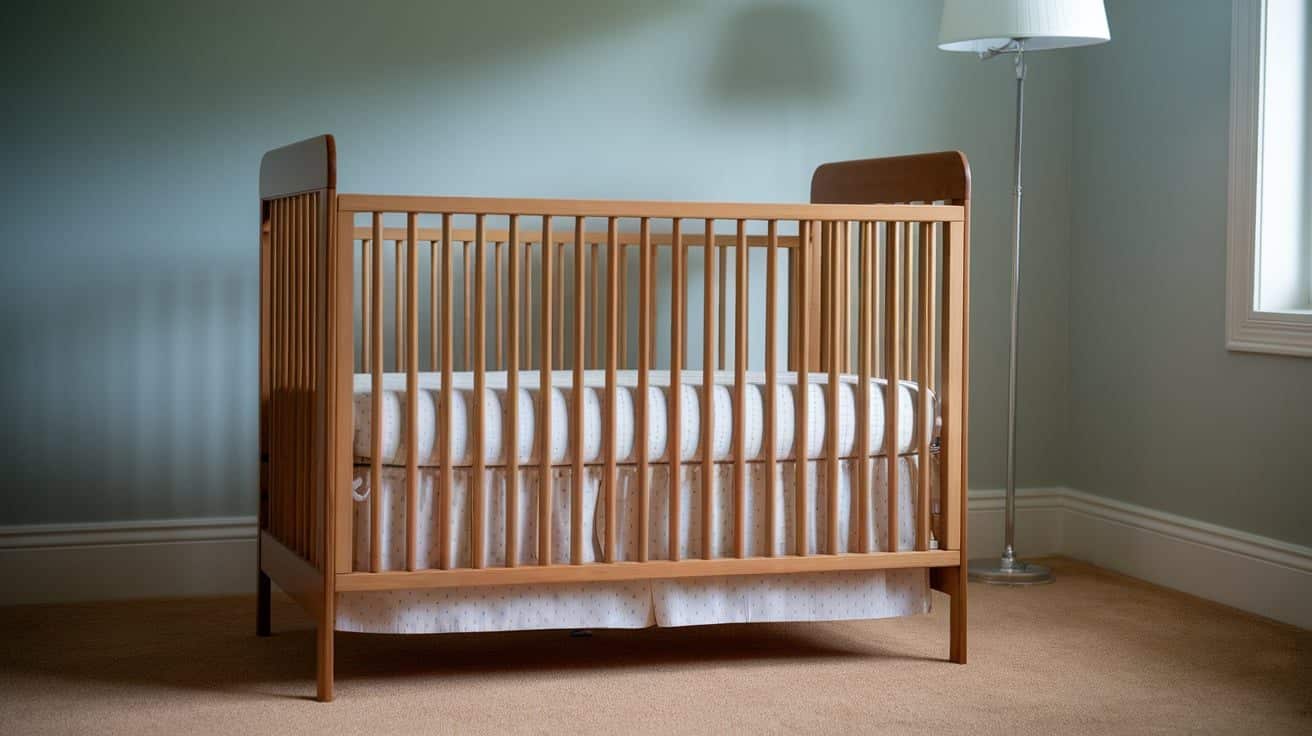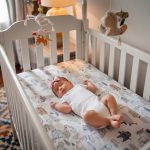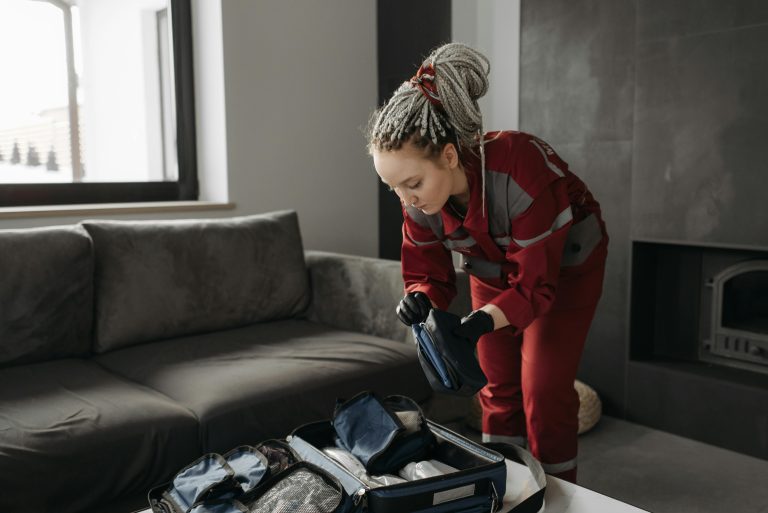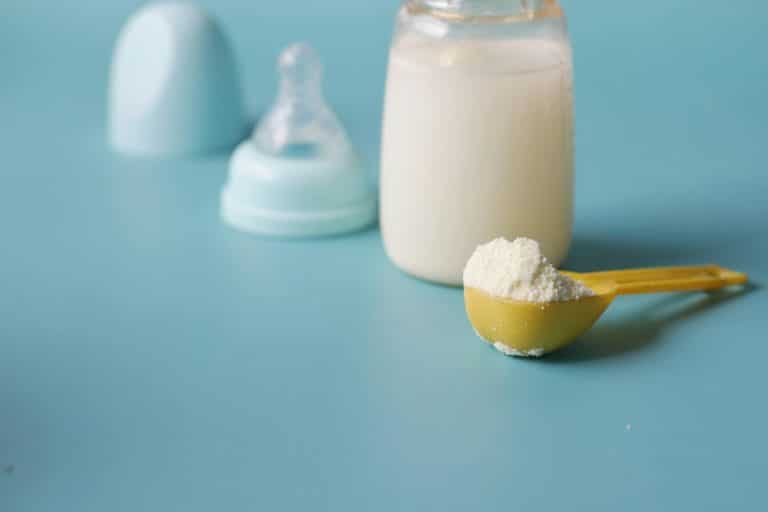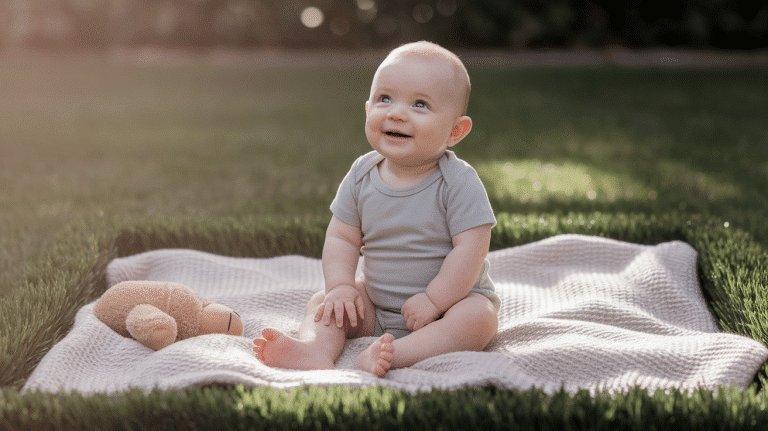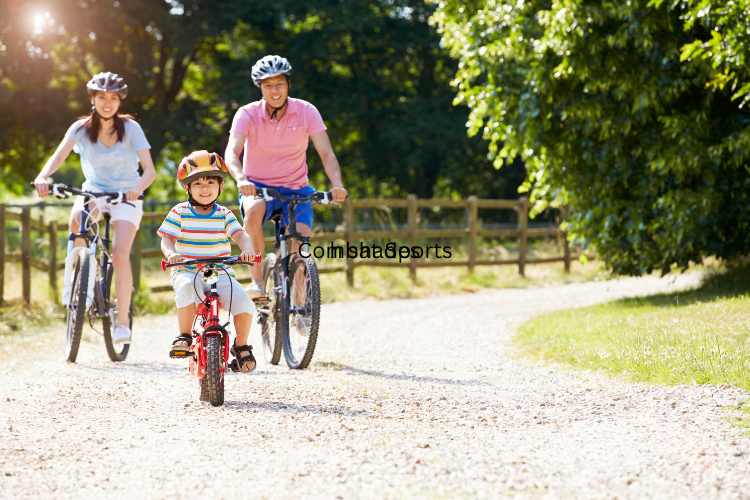I still remember my first time shopping for a baby crib, wondering exactly what to look for in a crib. The moment felt huge – after all, this would be where my little one would rest their head night after night.
I know your mind might be racing with questions like…
Should you choose wood or metal?
What’s the deal with safety ratings?
How much should you spend?
Don’t stress – I’ve been exactly where you are.
I learned so much during my search, from checking safety seals to finding the right size. Now, I want to share those lessons with you.
Let’s work together to find your precious baby a perfect, safe sleep spot.
What Factors to Consider When Choosing a Crib
I want to tell you what really counts when picking a crib. Yes, I know those glossy catalogs make everything look perfect, but let’s talk about what your baby truly needs.
First, take a deep breath – you don’t need the fanciest crib on the market. What matters is keeping your little one safe and snug.
Safety Basics
-
- JPMA certification is a must
- Slats should be close together (no more than 2⅜ inches apart)
- Smooth edges and sturdy joints
Size & Space Tips
-
- Standard size: 52×28 inches
- Mini cribs work for smaller rooms
- Leave space for easy baby access
Materials Matter
-
- Solid wood: Durable but pricey
- Metal: Strong and often cheaper
- Composite wood: Budget-friendly option
Remember, your baby will spend a lot of time here, so choose something that makes both of you feel good. And trust me—those adjustable mattress heights will save your back!
Types of Cribs: Finding Your Perfect Match
After trying out different cribs for my kids, I want to share what each type really brings to the table. No fancy talk – just real info from someone who’s been there!
Traditional Cribs
-
- Simple, no-fuss design that works great
- Easy to move around the room
- Often more budget-friendly
Convertible Cribs
-
- Changes into a toddler bed, then a full-size bed
- It saves money in the long run
- Most popular with first-time parents
Think of mini and portable cribs as your space-saving friends. Mini cribs fit perfectly in cozy rooms, while portable ones fold up when grandma wants a sleepover.
These smaller options keep your baby safe and comfy – just in a more compact package!
How to Find the Perfect Crib Mattress
I remember checking mattress firmness with my mom’s instinctive press test. Let me share what I learned after countless mattress squishes and size checks.
Getting the Right Feel
-
- Firm is best for babies – if it feels soft to you, it’s too soft
- Two-sided options have a firmer baby side
- Push the center – it shouldn’t keep your handprint
- Skip the memory foam for infants
Size Matters – A Lot!
-
- The two-finger test: no more than 2 fingers should fit between the mattress and crib
- The standard size is 28 x 52 inches
- Check the thickness – usually 5 to 6 inches is right
- Corner test: press each corner snugly against the crib frame
A snug mattress keeps your baby safe, and that’s what we’re all about! Take your time finding one that fits just right – no shortcuts when it comes to sleep safety.
Keep It Simple and Safe: Your Crib Bedding Guide
As a mom who once wanted all those cute crib extras, I learned that simple is best (and safest!). Let me tell you what your baby needs for sweet dreams.
Skip These Items
-
- No fluffy blankets or quilts
- No crib bumpers (even the mesh ones)
- No pillows or stuffed toys
- No sleep positioners
What your baby truly needs is basic and safe. Just grab 2-3 fitted sheets that wrap snugly around the mattress. Add a waterproof mattress cover underneath – trust me, you’ll be glad you did!
For warmth, use a sleep sack instead of blankets. That’s it!
A bare crib is a safe crib.
Smart Spending: Your Crib Budget Guide
I know that price tag shock when you first start crib shopping! Let me share how to get the most value without spending more than you need to.
What You Get At Each Price
-
- Under $200: Basic, fixed-side cribs with simple designs
- $200-400: Good quality with maybe 1-2 special features
- $400-800: Convertible options, better materials
- $800+: Premium finishes, brand names (but not necessarily better!)
What’s Worth Extra Money?
-
- Convertible features if you’ll use them long-term
- Sturdy construction that won’t wobble
- Easy-clean surfaces for those midnight messes
- Multiple mattress heights
My honest advice? Pick your must-haves first. Want a crib that converts to a toddler bed? Worth spending more. Just need something solid for a year or two? Save that money for diapers instead!
Remember – all cribs meet the same safety standards, no matter the price.
Making Your Perfect Crib Choice!
After going through two babies and many crib questions, here’s what I know for sure about what to look for in a crib. Don’t let all the choices stress you out!
Focus on what matters most – safety, size for your space, and what fits your budget. Skip the extras and stick to the basics. A solid crib, a firm mattress, and a few fitted sheets are all you need to start.
While setting up, consider adding a baby monitor and maybe a changing table nearby. These make nighttime much easier.
Trust your gut and pick what works for your family. At the end of the day, your baby doesn’t care about fancy features – they need a safe, cozy spot to rest and grow.
Frequently Asked Questions
What Is Important When Buying A Crib?
Look for sturdy construction, adjustable mattress height, and safety certifications.
How To Know If A Crib Is Safe?
Ensure it meets safety standards, has slats less than 2 3/8 inches apart, and no drop sides.
How Do I Know What Crib To Buy?
Choose a crib with safety certifications, adjustable features, and solid reviews.
What Is Needed In A Crib?
A firm mattress, fitted sheet, and no additional pillows, blankets, or bumpers.

